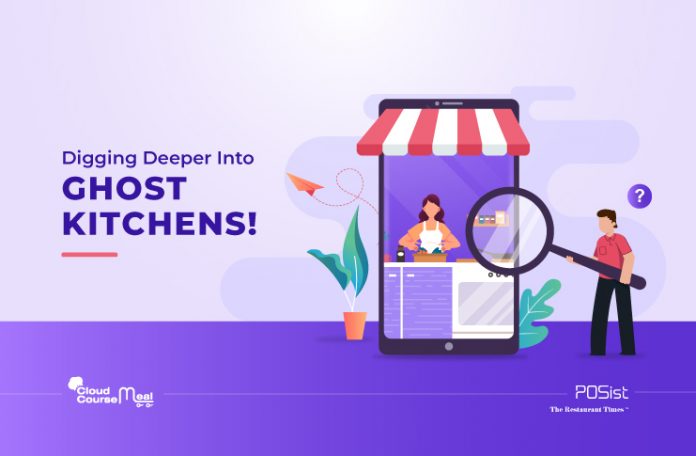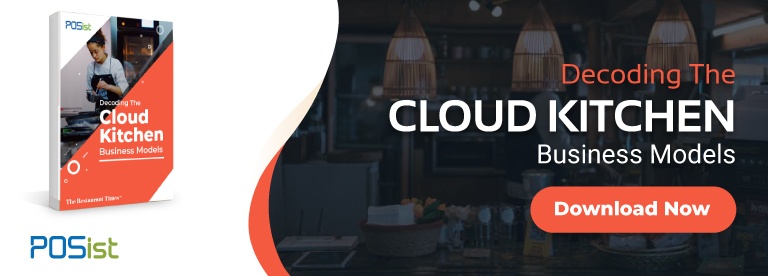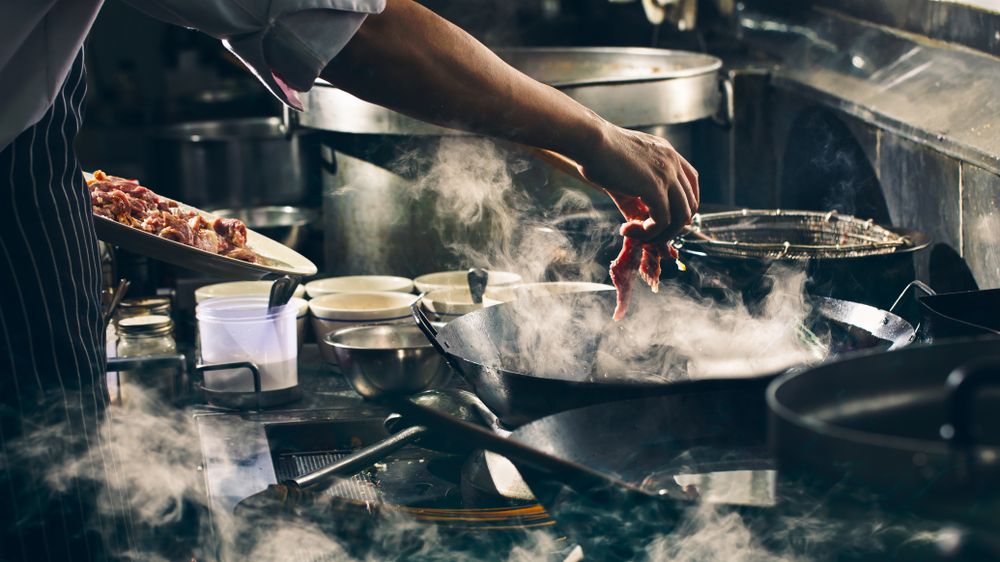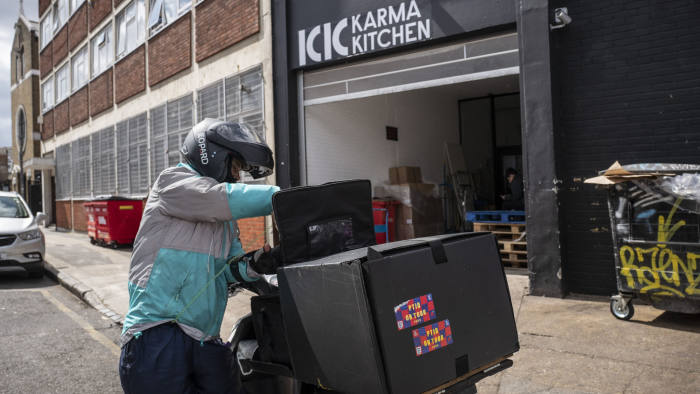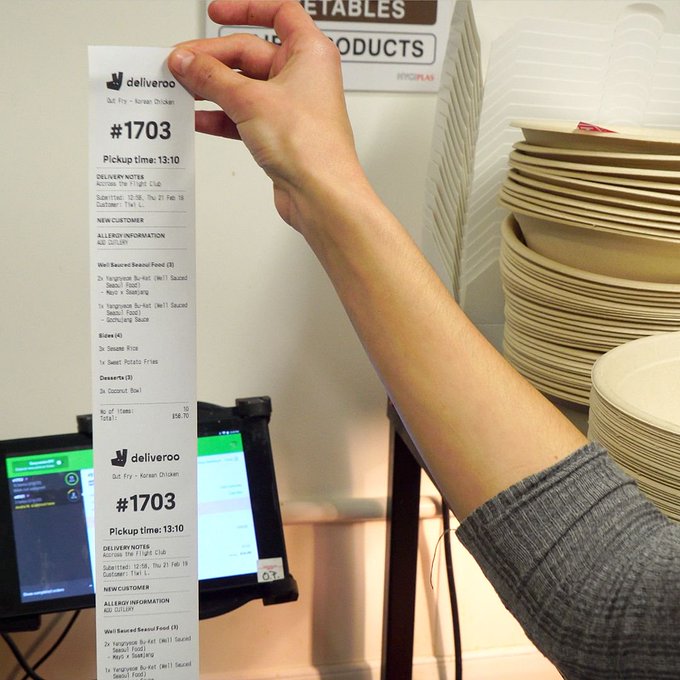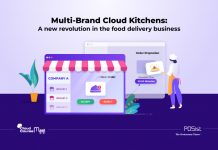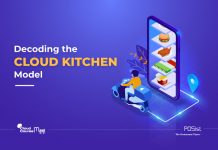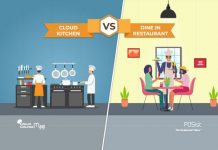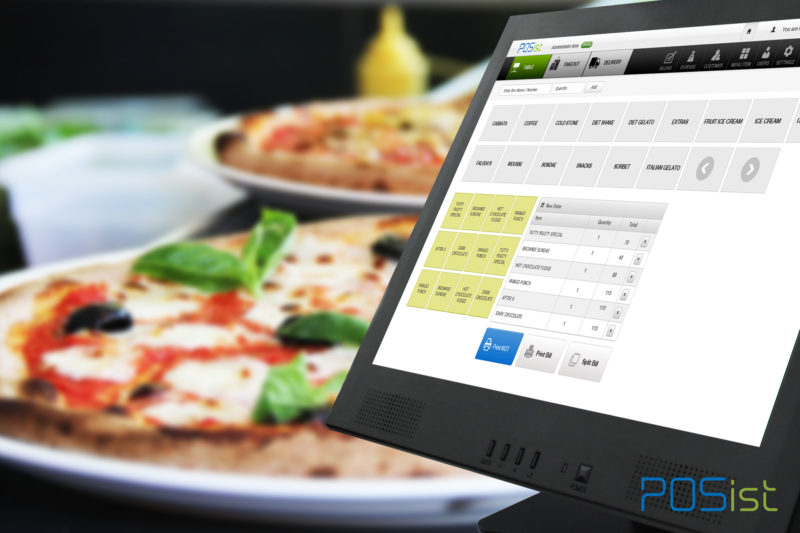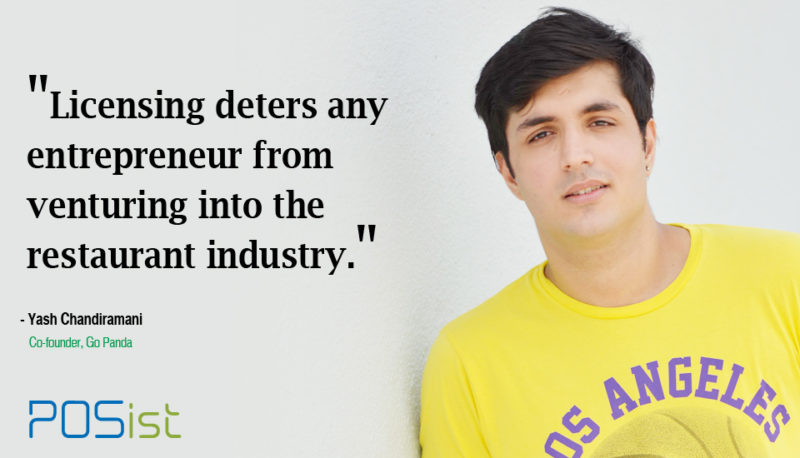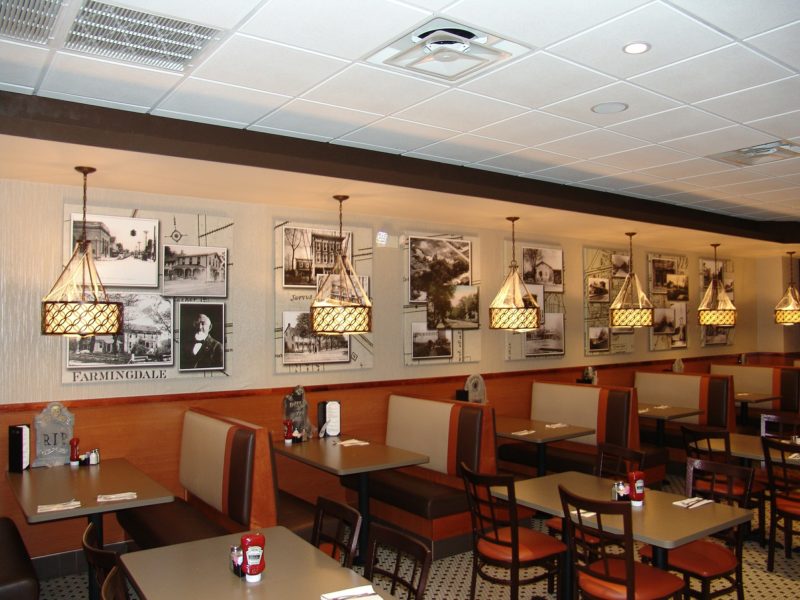Being a part of the restaurant industry, you must have heard the buzz around ghost kitchens or dark kitchens. The increasing consumer demand has made these kitchens quite popular in the restaurant space. Not many people are quite clear about the idea of a ghost kitchen and where are they to be found.
Ghost kitchens are restaurants that do not have a physical presence and only exist on the internet. They accept orders online through online food ordering platforms and through an online ordering enabled website and app. Cloud kitchens or ghost kitchens are interchangeably used terms. People often confuse ghost kitchens or virtual kitchens to be different. But in reality, their business model is the same as that of cloud kitchens.
Learn about the different types of ghost kitchen business models by downloading this comprehensive ebook!
Unmasking The Idea Of Ghost Kitchens
There are many different examples that we can consider to understand the business model of a Ghost Kitchen! One such model is the Deliveroo Model, which is an aggregator owned, which charges a commission for orders delivered from the co-working kitchens they partner.
Whereas another business model for ghost kitchens is the Kitopi Model, wherein both delivery and cooking are completely outsourced to a third party. The USP of ghost kitchens lies in lower operating costs and startup expenses.
In a nutshell, ghost kitchens can have multiple business models. From brand-oriented cooking to third-party food delivery, a ghost kitchen can use any of the flexible options available because of the absence of a physical outlet. From a single-brand ghost kitchen to a multi-brand ghost kitchen, there are different models that a ghost kitchen can choose.
How A Ghost Kitchen Works In General
- Order received from the customer
- The kitchen gets the order details
- The meal is prepared
- The order is packed
- The parcel is then delivered to the customer by a delivery fleet
Technology plays a crucial role in managing a cloud kitchen. It would be best if you started looking for a cloud kitchen POS that serves you with the best possible features to leverage profits out of your business. Some over-the-top features that you should be looking for are mentioned here!
- Centralized order taking
- Instant assigning of orders
- Inventory management
- Live reports and analysis
- Sales management
These features would help you manage and track your business better.
Essential Characteristics Of Ghost Kitchens
Once you have an idea of how a ghost kitchen works, you must move to the identifying characteristics of a ghost kitchen.
- No Physical Presence
- Minimal Wastage
- Lesser Risk
- Adjustable Menu
Advantages And Scope Of The Ghost Kitchen Business Model
Cloud kitchens are increasingly emerging as alternatives for those who prefer to order home-cooked food from outside.
Here are some advantages of a ghost kitchen business model, when compared to a standalone restaurant.
1. Lower infrastructure cost
The first and most obvious advantage that comes in handy with the ghost kitchen business model is the low infrastructure cost! Since there are no fancy doors to be built, no big piece of land to be bought, no ambiance to be set, the cost of infrastructure is only limited to the kitchen area.
2. Scalability
Since the cloud kitchen market in India is booming, it seems like the right time to invest in a cloud kitchen. Since the startup cost for opening a ghost kitchen is one-third as compared to a traditional restaurant, it is easier to scale the operations.
3. Low Overhead Cost
It takes money to keep a restaurant open every single day. It could be your electricity costs or your rent, there are many overhead costs that are involved in the functioning of a restaurant. Since the business model of a ghost kitchen doesn’t demand any of that, the overhead costs are much lower than setting up a physical restaurant.
4. One-time Investment
Another advantage of opening a ghost kitchen is that it involves only a one-time investment. The only time you’re putting in a large amount of money into your restaurant is the time you’re building your kitchen. The kitchen won’t require renovation or bringing out new designs on the walls every six months. A one-time investment to build a cloud kitchen lets you make money for the long term.
5. Capturing a Wider Audience
A physical restaurant has limited land and other resources to use. These restaurants tend to have limited seats, whereas, in a cloud kitchen, you can take as many orders as your target.
Challenges For Ghost Kitchen Operators
Investing in a cloud kitchen business has tremendous return opportunities. However, there are many challenges that stand in the way of running a successful ghost kitchen.
1. Delivery Errors
Precision and accuracy are crucial to running a successful restaurant business. The same goes for a ghost kitchen business model as well. Unlike a standalone restaurant, a ghost kitchen faces delivery problems without a food delivery fleet.
2. Maintaining Consistency Over Recipes
Another important point that comes into the picture while handling multiple outlets of your ghost kitchen brand is maintaining consistency. By consistency, we mean standardized recipes and restaurant operations. Investing in a restaurant management platform can take care of any inefficiencies.
3. Customer Retention
Since there is absolutely no customer interaction, it is quite hard for a new brand to build a trust factor, given there is such immense competition around. Ghost kitchen brands need to first work on their online presence so that they are discovered and liked by the customers. An SEO-friendly website and regularly updating your social media are necessary requisites. Online food aggregators can be of enormous help to these brands for enhancing their brand image.
4. No Option To Serve Alcohol
The next drawback of a cloud kitchen business model is that they do not have an option to serve alcohol. Successful restaurateurs know that adding alcoholic drinks to your menu increases your sales marginally. In a way, this cuts down on the potential revenue for cloud kitchens.
5. Masked Customer Information
When you are handling a customer database in a restaurant, you know their past orders, their names, and contact details. While you take orders from a third party, the customer information is almost always masked, unless you primarily take their orders.
6. Dependence on food aggregators
The cloud kitchen business model would not fetch them any return unless they are highly ranked on online food aggregators. Since platforms like Swiggy and Zomato are the first choices for customers to decide where to eat out, it is an excellent idea to enhance your brand’s visibility there.
Setting the Bar High For Other Restaurateurs
Ghost kitchens are the future. Since this business model does not eat into limited resources, they still make you a lot of money, it would not be surprising if most restaurateurs started investing in cloud kitchen brands in the time to come.
A clear example of the growing trend towards ghost kitchens is the emergence of another cloud kitchen venture by Uber co-founder, Travis Kalanick. After Uber Eats, Door Dash, and Deliveroo, Kalanick has come up with another F&B brand called Karma Kitchen.
Restaurants Turning Into Ghost Kitchens!
Real estate prices rise and an ever-increasing scarcity of resources have made it quite attractive for restaurateurs to move towards ghost kitchens. Since ghost kitchens provide easy avenues for expansion, especially to leverage the growing demand for food delivery, established restaurant chains across the globe are leveraging the ghost kitchen, business model. Lite Bite Foods, a popular F&B company that runs several fine-dine and casual-dine restaurants has announced plans of opening over 35 ghost kitchens in five cities.
All in all, the concept of a ghost kitchen is intriguing to the F&B Industry. The low-cost high-return advantage offered by it is leveling the playing field for startups pitted against multinational restaurant chains. While cloud kitchens have their share of challenges, they have excellent scope for entrepreneurs to sustain and grow their revenues.


